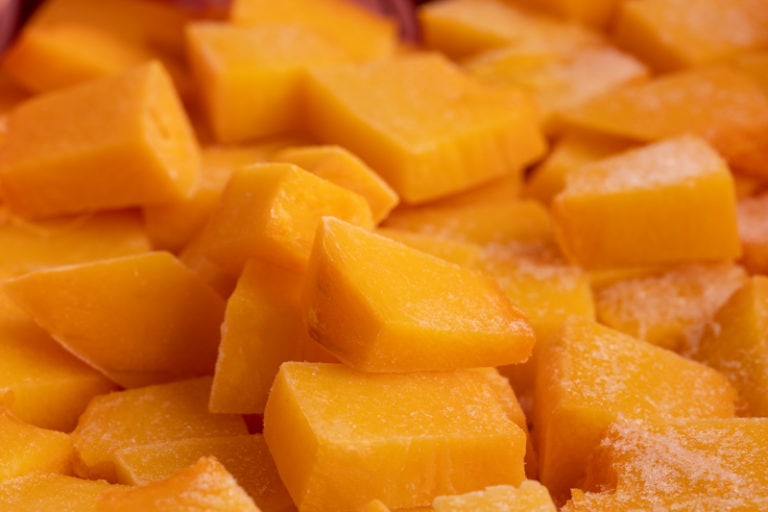How Long Do Bell Peppers Last? [Whole, Cut, Cooked]
You’ve stocked up on bell peppers, but now the clock is ticking. How long do bell peppers last?
Dive in to discover everything about the shelf life of these colorful veggies.
Bell Peppers Storage Time Table
| Pantry | Fridge | |
|---|---|---|
| Bell peppers (red, yellow, orange, green) | 3 to 5 days | 7 – 14 days |
| Cut bell peppers | 4 – 5 days | |
| Cooked bell peppers | 3 – 4 days |
Whole Peppers
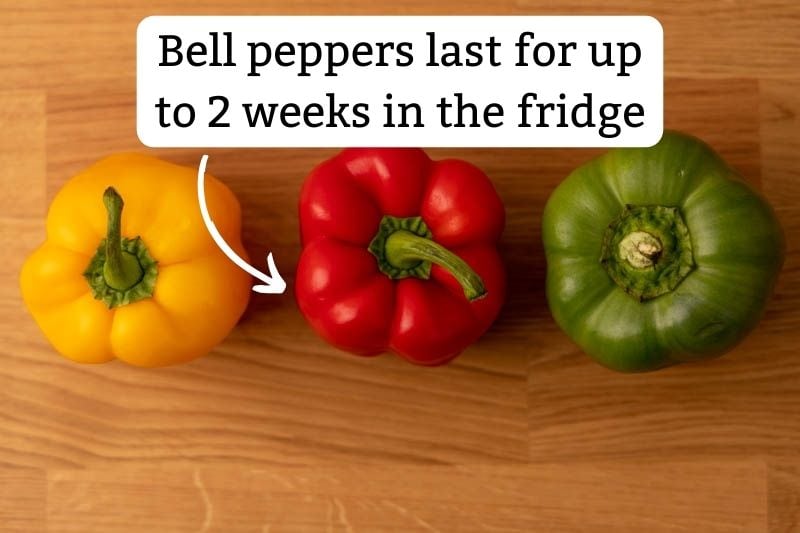
According to the UC Postharvest Technology Center, whole bell peppers last up to two weeks in the fridge. Alternatively, you can leave them at room temperature, where they’ll retain quality for 3 to 5 days before they start to soften and wilt.
Bell peppers last the longest when stored at 45°F (7.5°C), so to keep their quality as long as possible, place them in the warmest place in the fridge. The crisper drawer is a good option. And if possible, the peppers should be near the front, where it’s always a bit warmer than in the back.
(If you want more tips on storing these veggies, check out my piece on whether you should refrigerate bell peppers.)
And if the mentioned two weeks aren’t long enough, consider freezing the peppers. Here’s my article on how to freeze bell peppers.
Finally, the mentioned periods are only estimates. Always check your bell peppers for spoilage signs before eating.
The better quality peppers you buy, the longer they’ll stay okay. Buy bell peppers with firm skin without any wrinkles or sunken spots, and with a green stem.
Now, you might’ve heard that green bell peppers last longer than red, yellow, or orange ones. What’s the deal with that?
What about Green Peppers?
Sometimes green bell peppers can last up to 3 weeks, about a week longer than other varieties, such as yellow or red bell peppers. That’s because some green peppers out there are simply unripened red peppers.
The issue here is that you can’t know for sure if the one you’re buying is the one that’s not yet ripe and will last longer or a fully ripe one that was supposed to be green in the first place.
Because of that, I wouldn’t count on your green peppers to last longer than other color options. If they do, great, but don’t bet on it and eat them before they start to lose water and soften.
Want to learn about jalapenos? Here’s a piece on the shelf life of jalapeno peppers.
Cut Bell Peppers
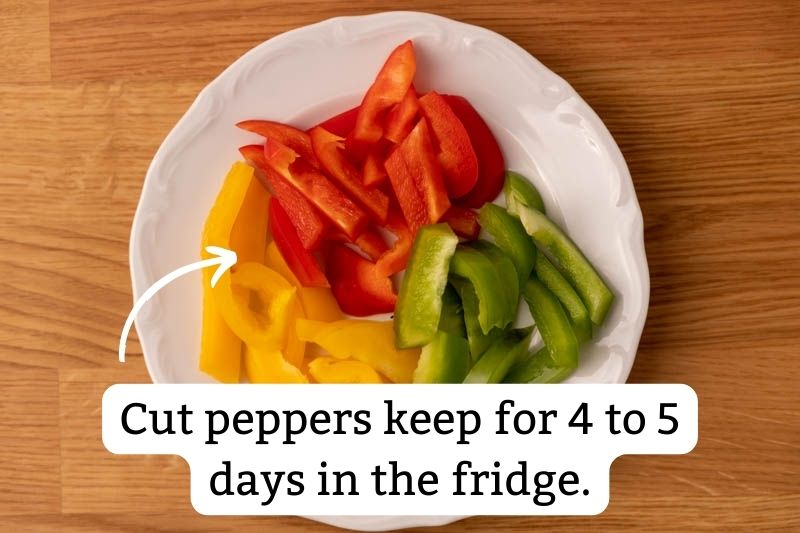
Cut bell peppers keep quality for about 4 to 5 days in an airtight container in the fridge. If you want an extra day or two of good quality, place a paper towel beneath the peppers that will soak in excess moisture.
Cut peppers lose quality much quicker than whole ones. They start to soften and rapidly lose water only after a day or two of cutting, and soon, you see water drops in the container. Those drops speed up decay even further, and that’s why that paper towel is handy.
For me, I typically remove the stem and the seeds and keep a cut-up bell pepper in a resealable container in the fridge. This way, the veggie is ready to use, and I can quickly prepare a couple of slices whenever needed.
Cooked Bell Peppers & Dishes
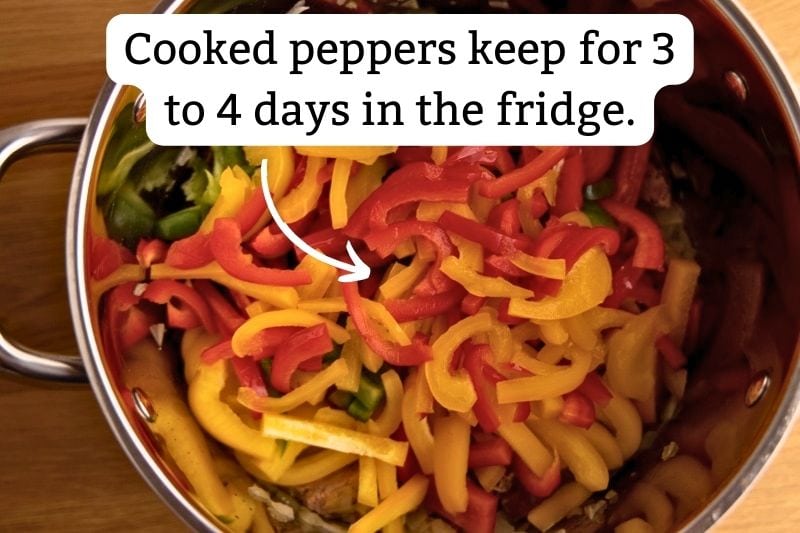
Cooked bell peppers keep for 3 to 4 days in an airtight container in the fridge.
After cooking, let them cool down to about room temperature, place them in a resealable container, and refrigerate. And make sure it takes less than 2 hours between finishing cooking and transferring the peppers to the fridge.
Cut bell peppers keep for about 4 to 5 days in an airtight container.
I often remove the stem and the seeds and keep a cut-up pepper or two in the fridge. This way, it’s easy to add it to meals without any further prep.
Rotten Records: Share Your Snap!
Caught some food past its prime? Upload your photo to “Rotten Records” and help others spot the signs of spoilage. Every image makes our food community safer and more informed!
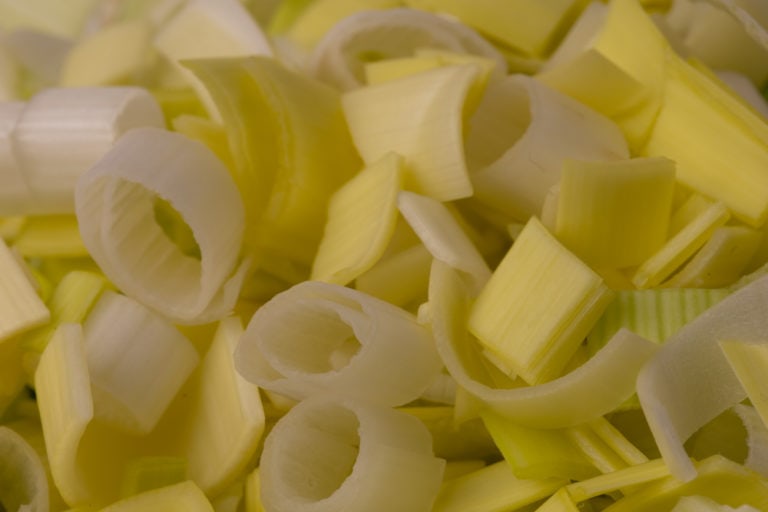
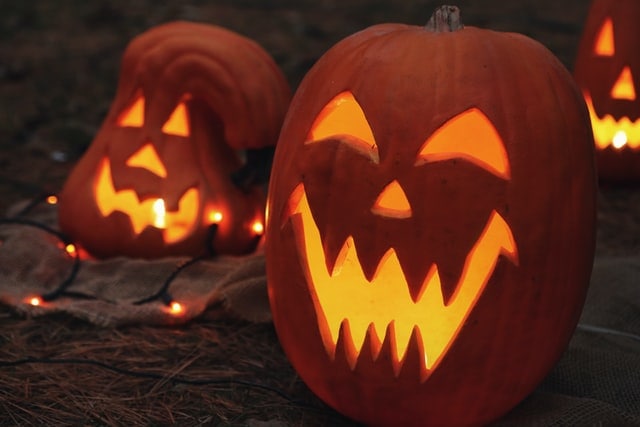
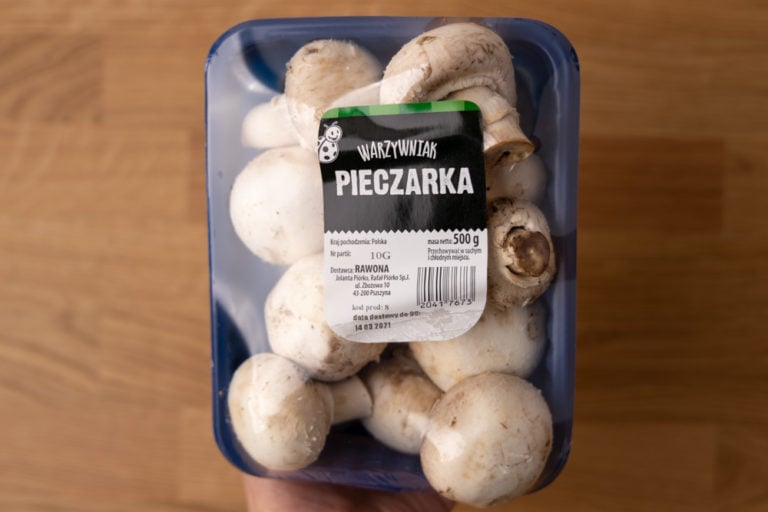
![How to Tell If Carrots Are Bad? [4 Signs of Spoilage]](https://www.doesitgobad.com/wp-content/uploads/Carrot-spoilage-signs-768x512.jpg)
![How Long Does Kale Last? [+ Tips to Make It Last Longer]](https://www.doesitgobad.com/wp-content/uploads/how-long-does-kale-last-infographic-1-1-768x512.jpg)
